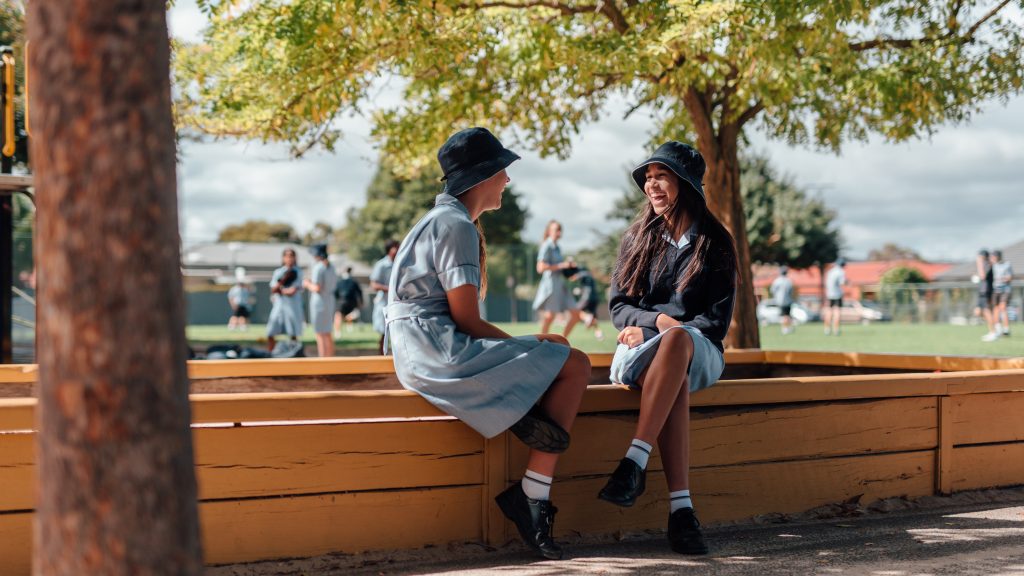Middle School Subjects – Health and Physical Education
Health and Physical Education in the Middle School provides students with an experiential curriculum that is contemporary, relevant, challenging and physically active. Our aim is to continually build students abilities to be able to transfer across sporting disciplines allowing them to remain physically active no and into their future.
Students develop the skills, knowledge, and understanding to strengthen their sense of self, and build and manage satisfying, respectful relationships. They learn to build on personal and community strengths and assets to enhance safety and wellbeing. They critique and challenge assumptions and stereotypes. Students learn to navigate a range of health-related sources, services and organisations.
At the core of Health and Physical Education in Middle School is the acquisition of movement skills and concepts to enable students to participate in a range of physical activities – confidently, competently and creatively. As a foundation for lifelong physical activity participation and enhanced performance, students acquire an understanding of how the body moves and develop positive attitudes towards physical activity participation. They develop an appreciation of the significance of physical activity, outdoor recreation and sport in Australian society and globally. Movement is a powerful medium for learning, through which students can practise and refine personal, behavioural, social and cognitive skills.
Lessons are conducted across a variety of specific learning areas on the soft play (grass), synthetic turf, hard play (hard courts) and the indoor gymnasium. We also have strong relationships with other local specific sporting facilities and associations for students to access for the sport conducted at the time, allowing them to develop and refine specific skills and understanding for game play.
Sport Topics
Students are taught by specialist teachers and participate in a range of sports including (but not limited to):
- Athletics
- Australian Rules Football
- Badminton
- Basketball
- Cricket
- Cross Country
- Fitness programming / circuits
- Hockey
- Inclusive activities
- Lacrosse
- Modified / Cultural Games
- Netball
- SASI Identification Fitness Testing
- Soccer
- Squash
- Table Tennis
- Team Handball
- Tennis
- Ultimate Frisbee
- Volleyball
- Water Safety
Students learn and build upon the specific skills and strategies that are used in a range of physical activity pursuits becoming confident in participating in organised events outside of school, living a sustainable healthy and active lifestyle.
Theory Topics
Theoretical topics that are introduced during Middle School include:
- Benefits of Living a Healthy and Active Lifestyle
- Food and Nutrition
- Relationships
- Mental Health and Wellbeing
- Alcohol and Other Drugs
- Personal Hygiene
- Safety
- First Aid
- Human Body Systems (skeletal, articular, muscular and vital organ functions)
- Sports Coaching
Learning Tasks and Assessments
Students consolidate their knowledge and understanding of Health and Physical Education through various learning tasks and assessment types. These include:
- Self, Peer and Video Analysis
- Advertisements
- Journal / Personal Reflections
- Analysis of Newspaper articles and other sources
- Podcasts
- Multimodal Presentations
- Reports
- Video recordings, data collection and analysis
- Others depending on students interests and abilities
Uniform Expectations
As part of Health and Physical Education lessons, students are required to wear the correct PE uniform consisting of:
- Emmaus polo shirt
- Emmaus shorts (Shorts need to be correct fit and not too baggy)
- Emmaus wide brim or bucket hat
- Running shoes or cross trainers (Skate Shoes or Dunlop Volleys are not permitted as they don’t provide appropriate support for ankles or sole of their feet)
- Emmaus tracksuit on cooler days (Shorts and shirts need to be worn under the tracksuit so that it can be removed when students have warmed up)
- Sports drink bottle (water only)
Students that are injured or ill are still required to be changed, as they will be incorporated into the lessons where possible (i.e. umpiring, coaching, statistician, video recorder, etc.). A note from parents / caregivers or specialist is great appreciated outlining your child’s injuries and possible timeframe that they may be out of for practical lessons.

